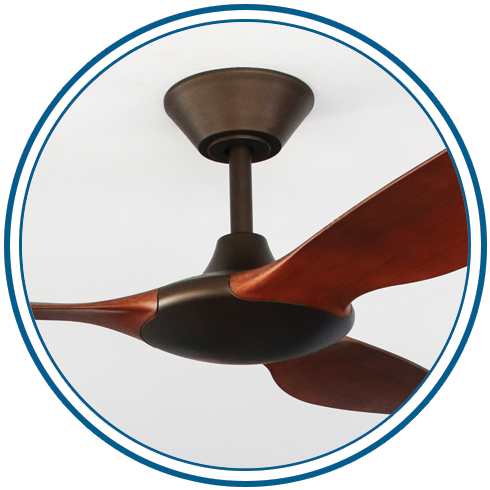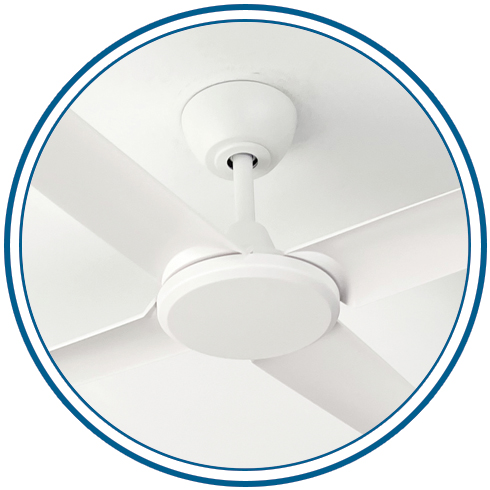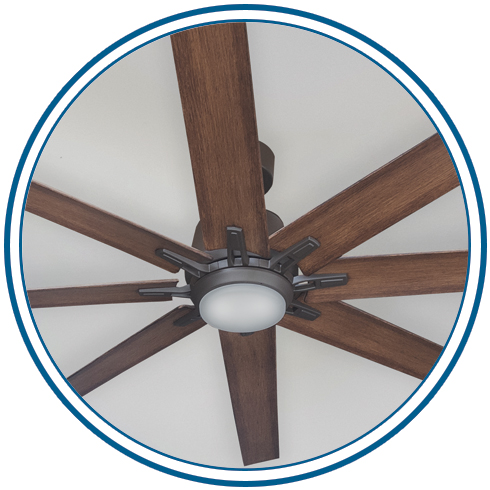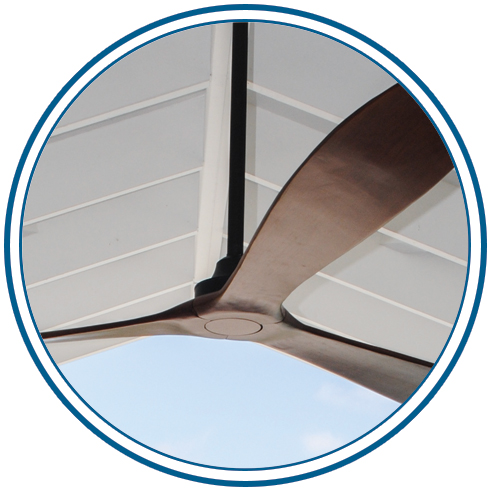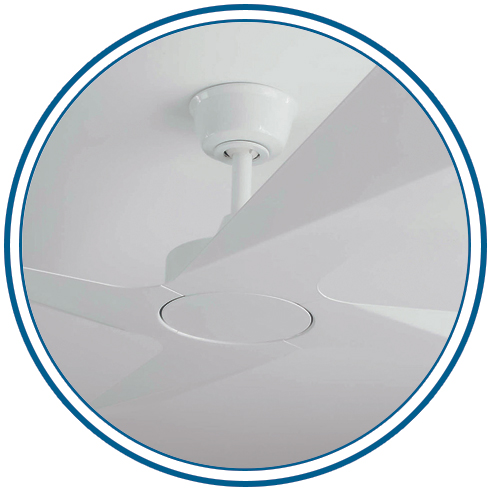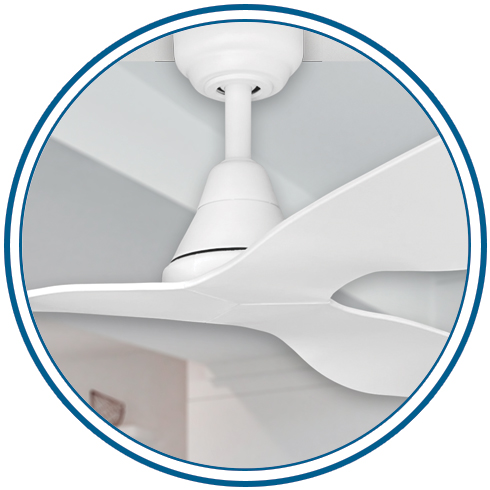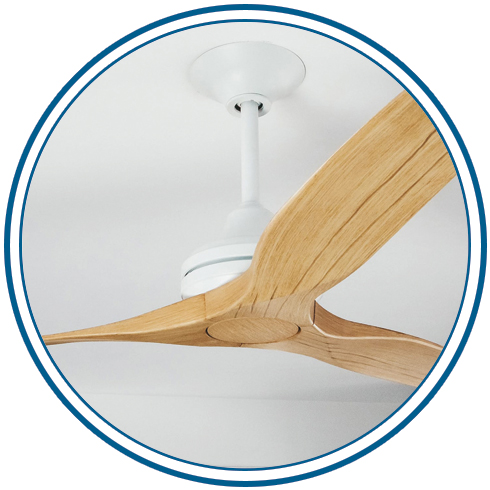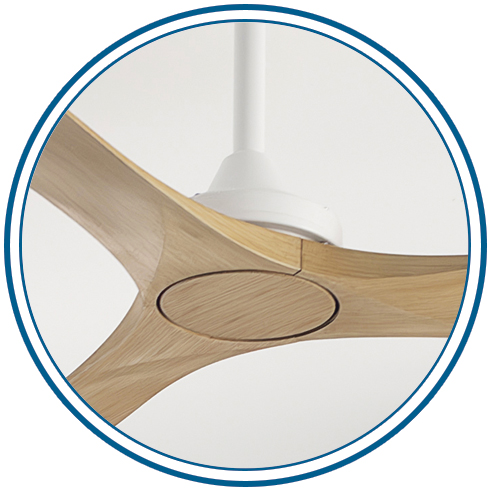Table of Contents
Choosing the right size ceiling fan can be challenging and confusing – each space, style and preference is different. We’ve created the Ceiling Fan Size Guide to help you make a more informed buying decision.
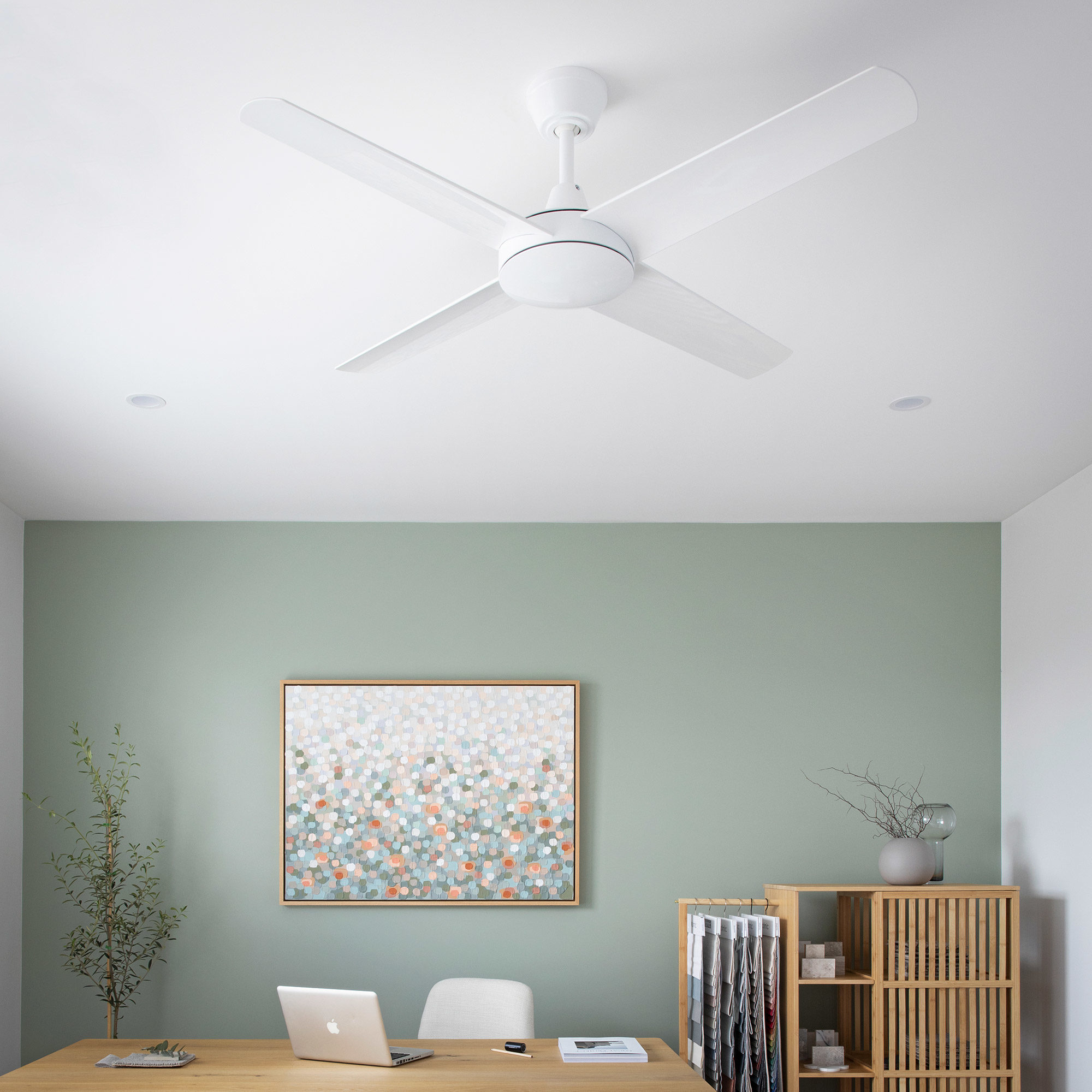

Choose the right size ceiling fan for your space
There’s no exact science to selecting the right size ceiling fan for a space (as every room layout is different), but the following sections will help guide you in the right direction. Always ensure at least 50cm of space from the tip of any blade to any wall. Pay attention to high furniture or floor-to-ceiling wardrobes to make sure they won’t reduce your fan’s performance.
“Always ensure at least 50cm of space from the tip of any blade to any wall.”
Small spaces (small bedrooms, offices, media rooms, etc.)
For small spaces less than 3m x 3m, we would recommend 48″ or smaller ceiling fans. A small Australian bedroom is around 2.8m x 2.5m, in which space we would recommend a 44″ ceiling fan, although depending on the room layout a 48″ would still suit. For small spaces, consider your lighting requirements – you will most likely require a light kit on your ceiling fan. Having a 48″ ceiling fan in a small space may dominate the decor in the room – so consider the style of the ceiling fan to be installed.
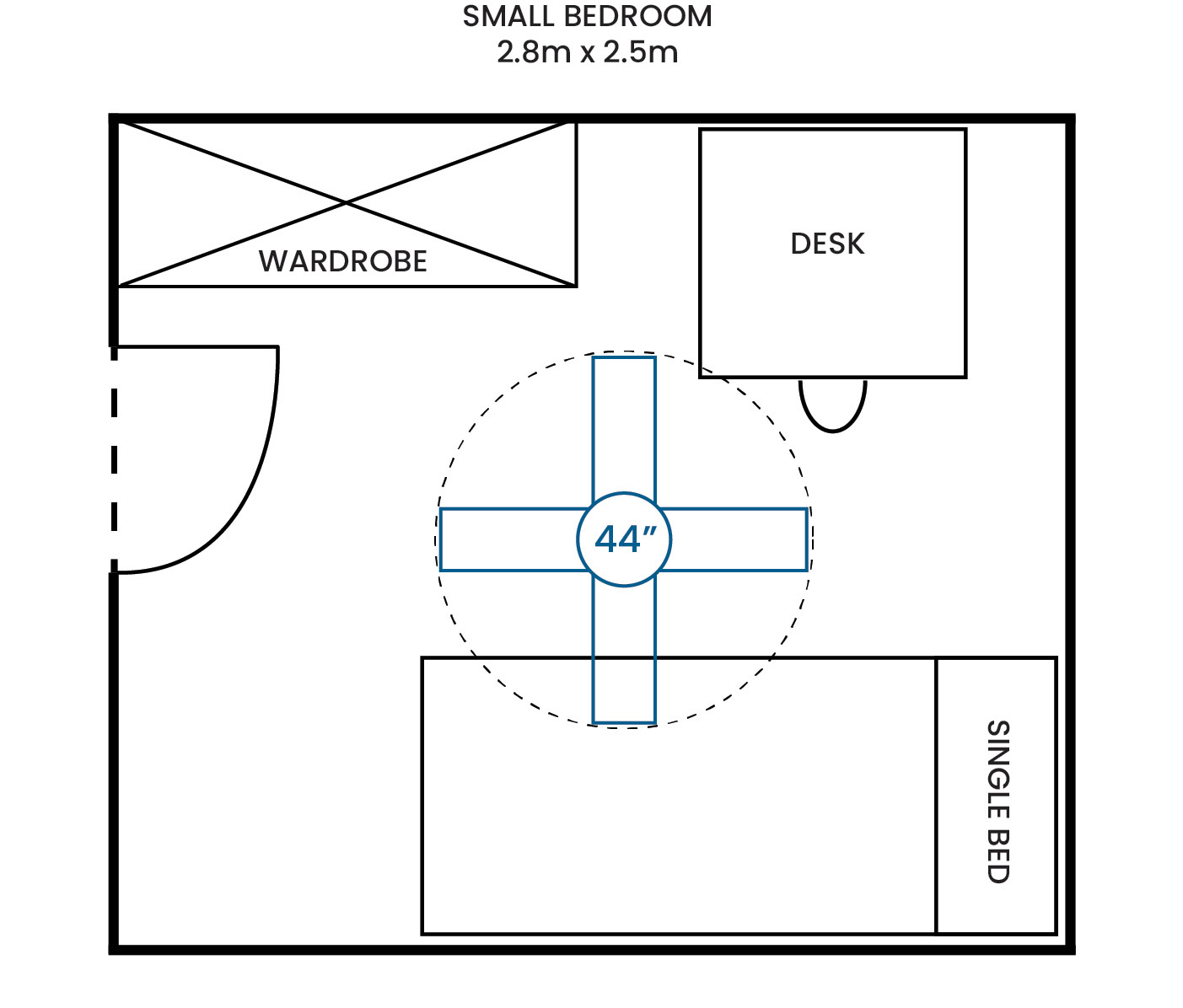
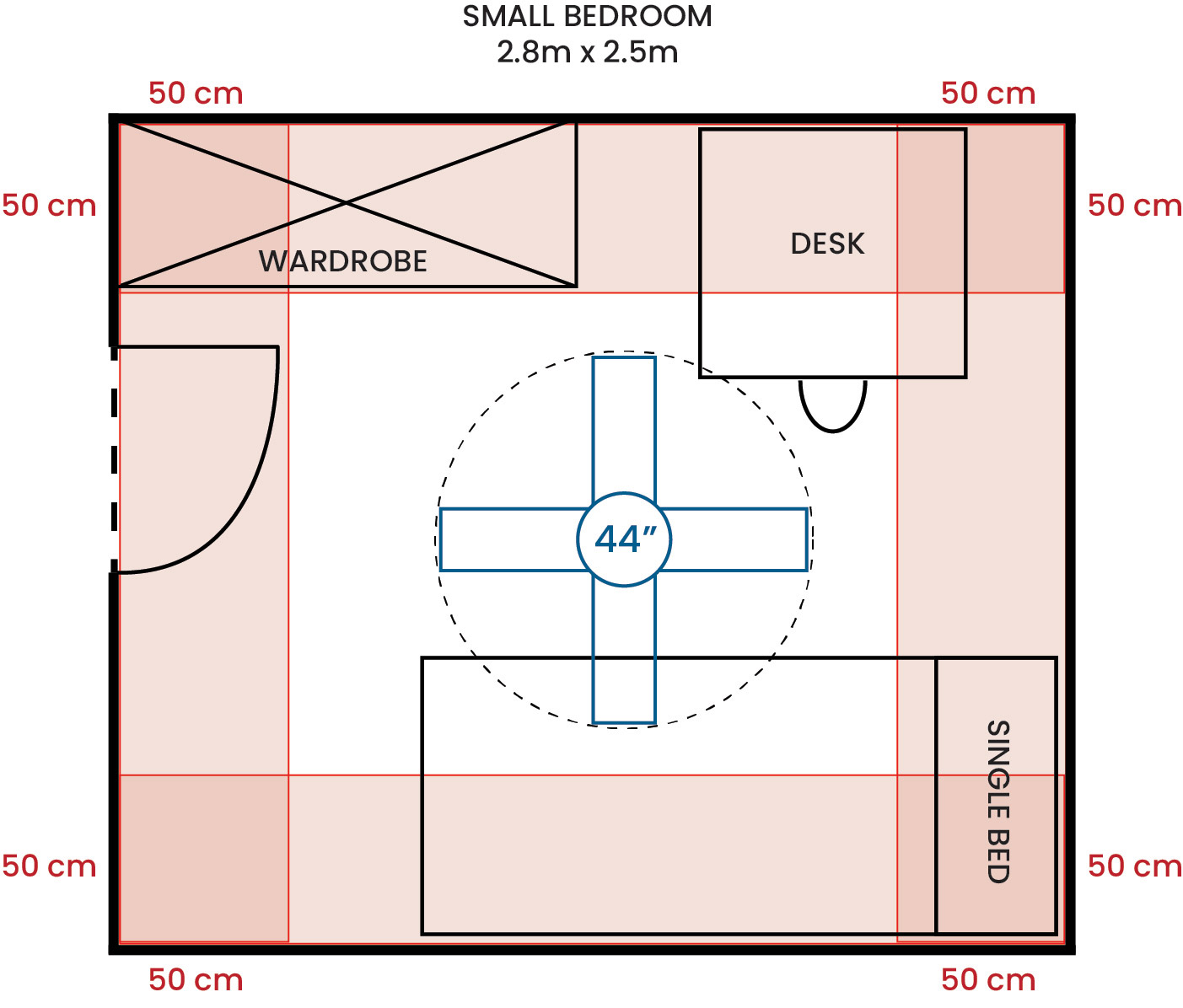

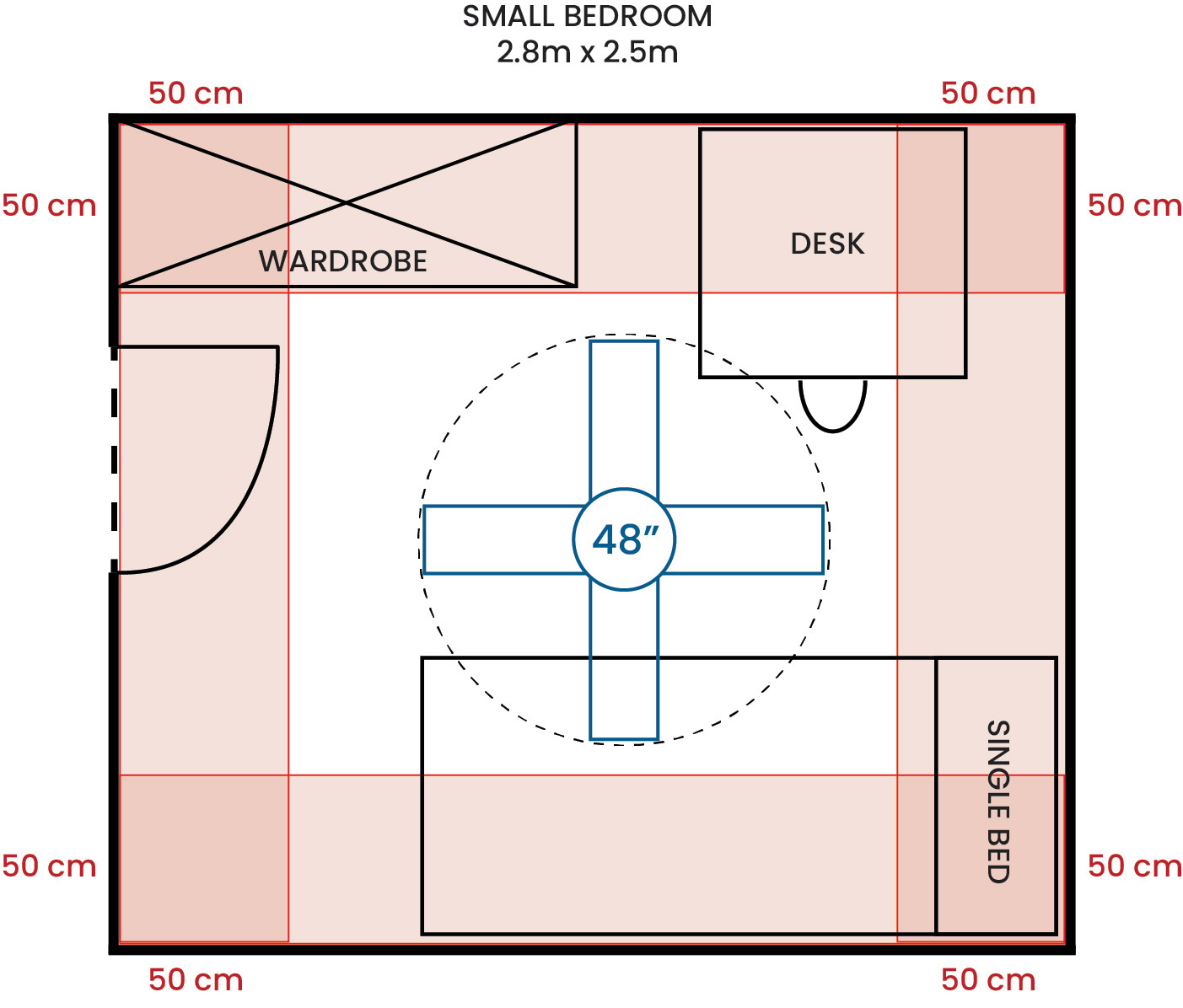
Medium spaces (standard bedrooms, living areas, dining area, etc.)
For medium spaces that are between 3m x 3m and 4m x 4m, consider ceiling fans between 48″ and 56″ in size, depending on the exact size of your room. The average bedroom size in an Australian home is around 3.2m by 3.0m, in which space we would recommend a 52″ ceiling fan. For larger than average bedrooms, up to 56″ model sizes may be suitable. A 56″ model in the standard bedroom would fit (depending on layout), however may dominate the space and provide too much airflow volume.
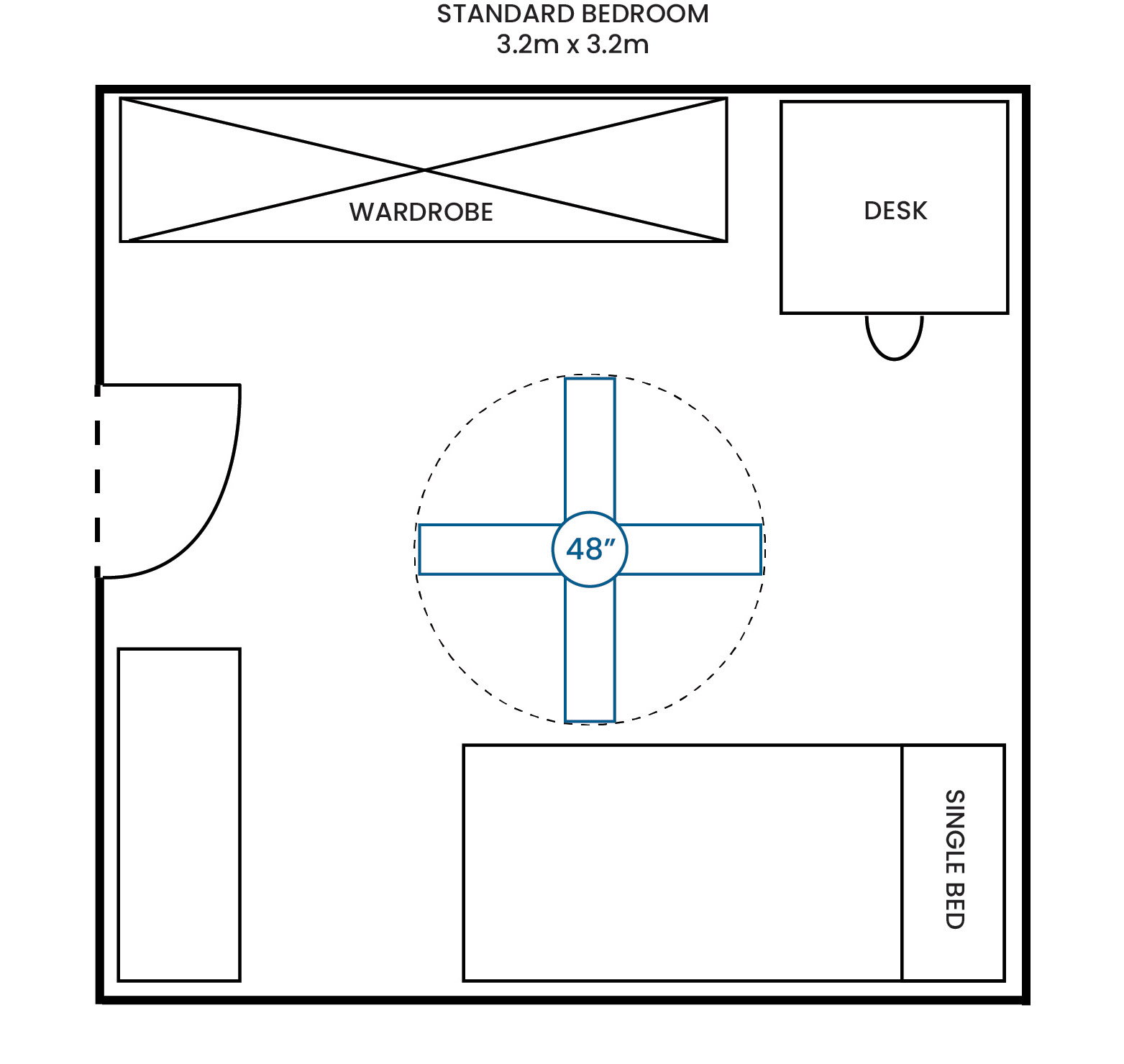
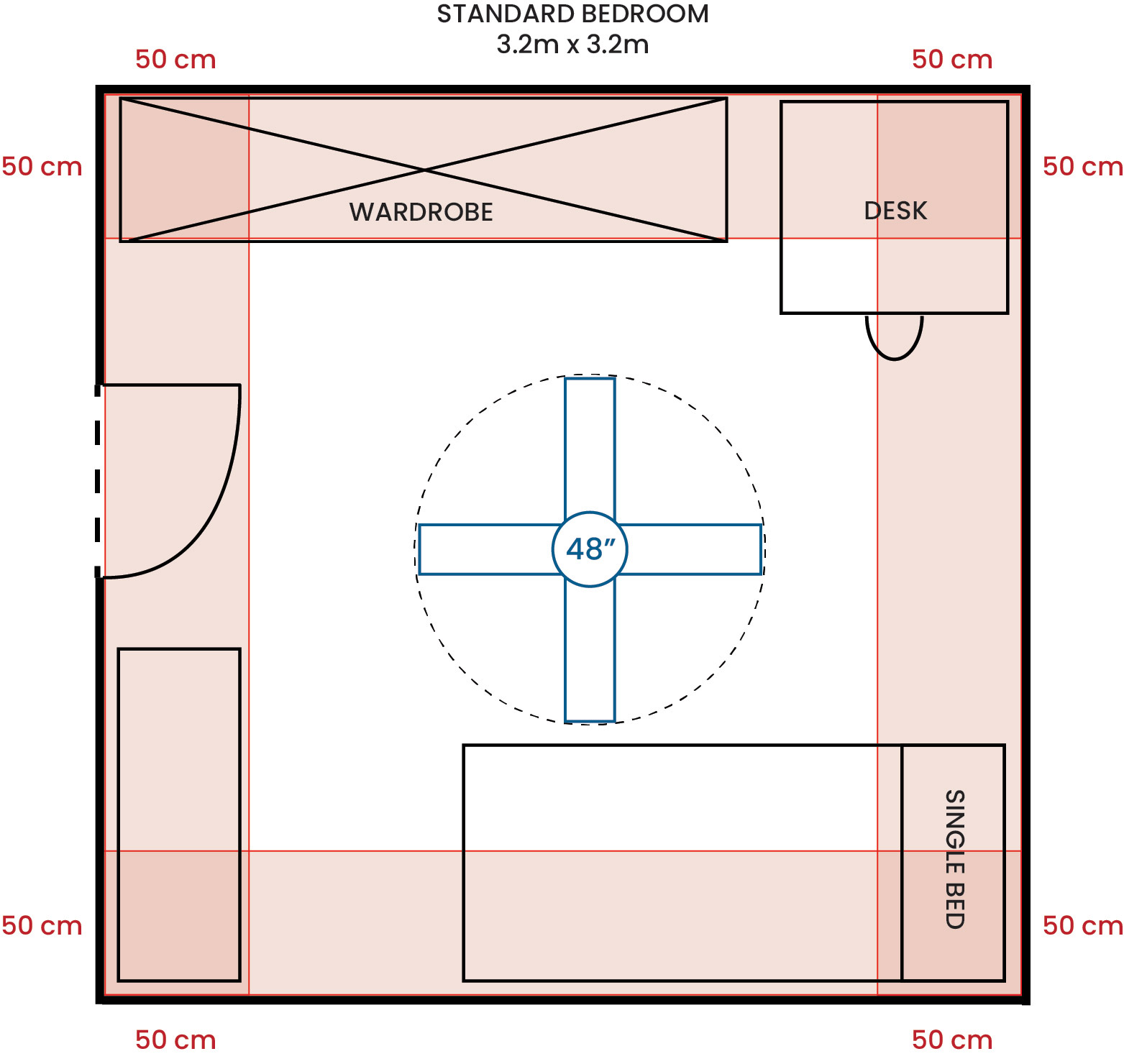

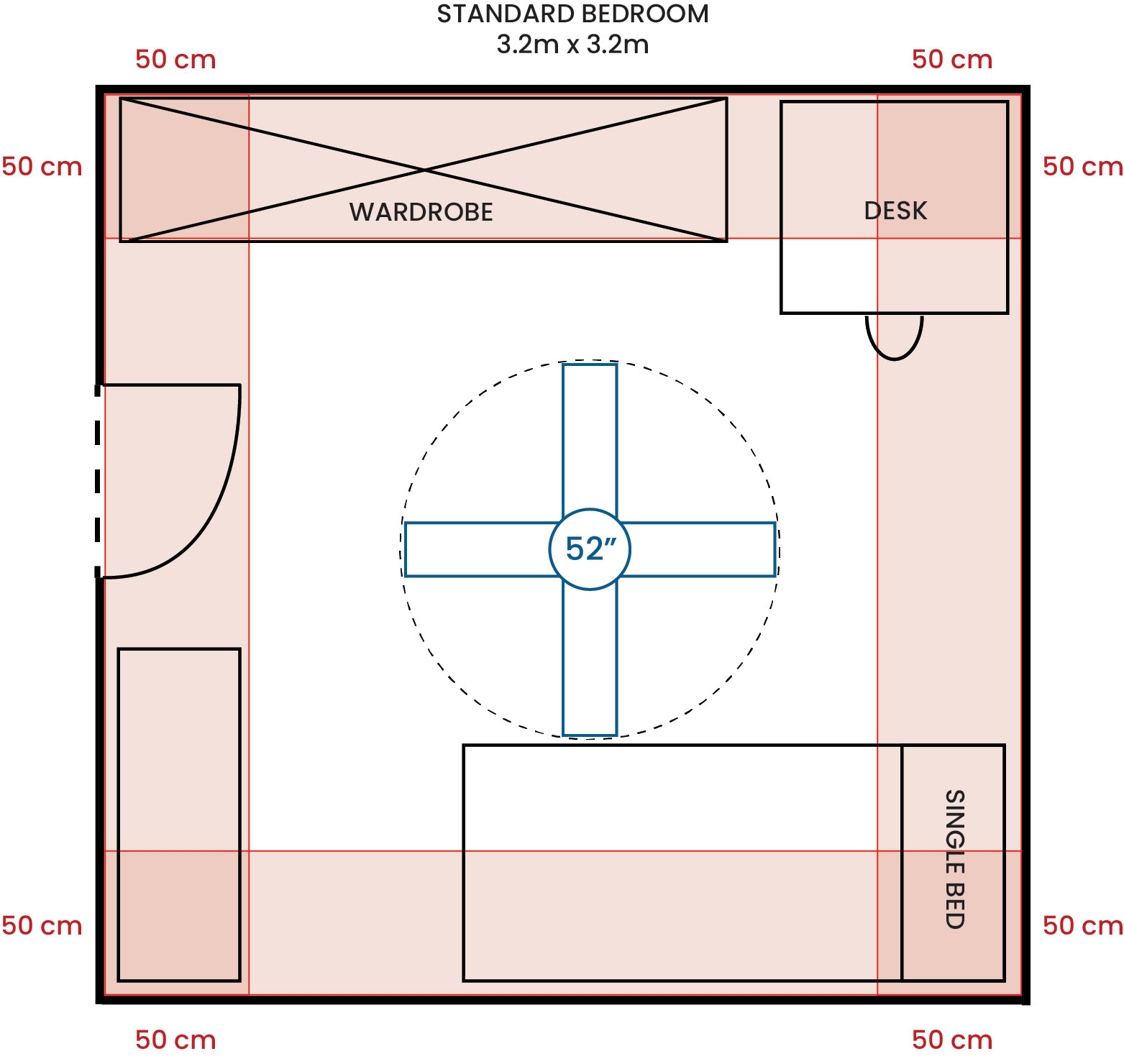
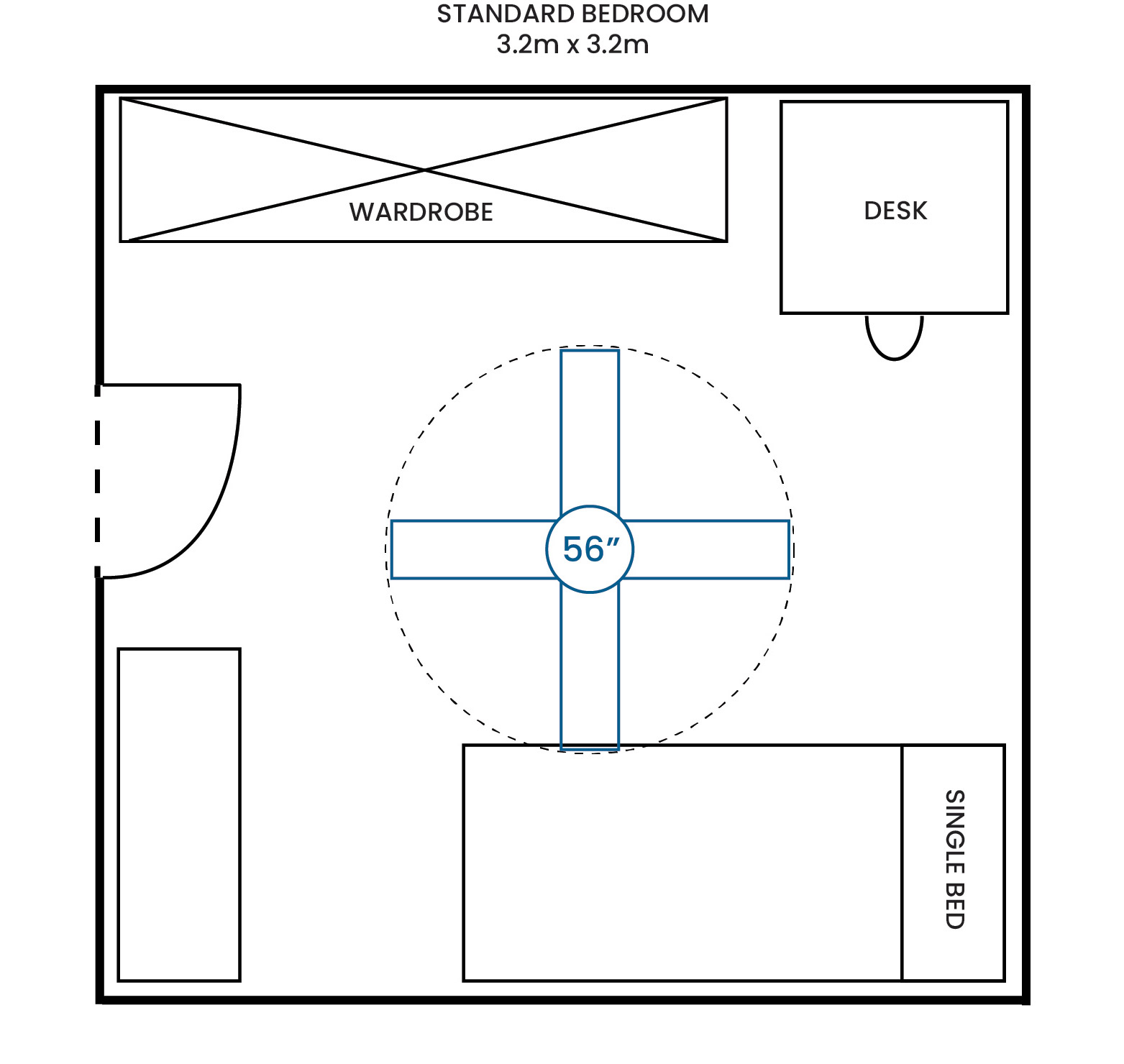

The average standard Master Bedroom in an Australian home is 4m x 3.8m and blurs the line between medium and large spaces. This would allow for ceiling fans up to 60″ in diameter, although a 52″ ceiling fan positioned directly over the bed would still provide the necessary cooling while you sleep. A small Master Bedroom that is 3.5m x 3.5m would suit either a 52″ or 56″ ceiling fan.
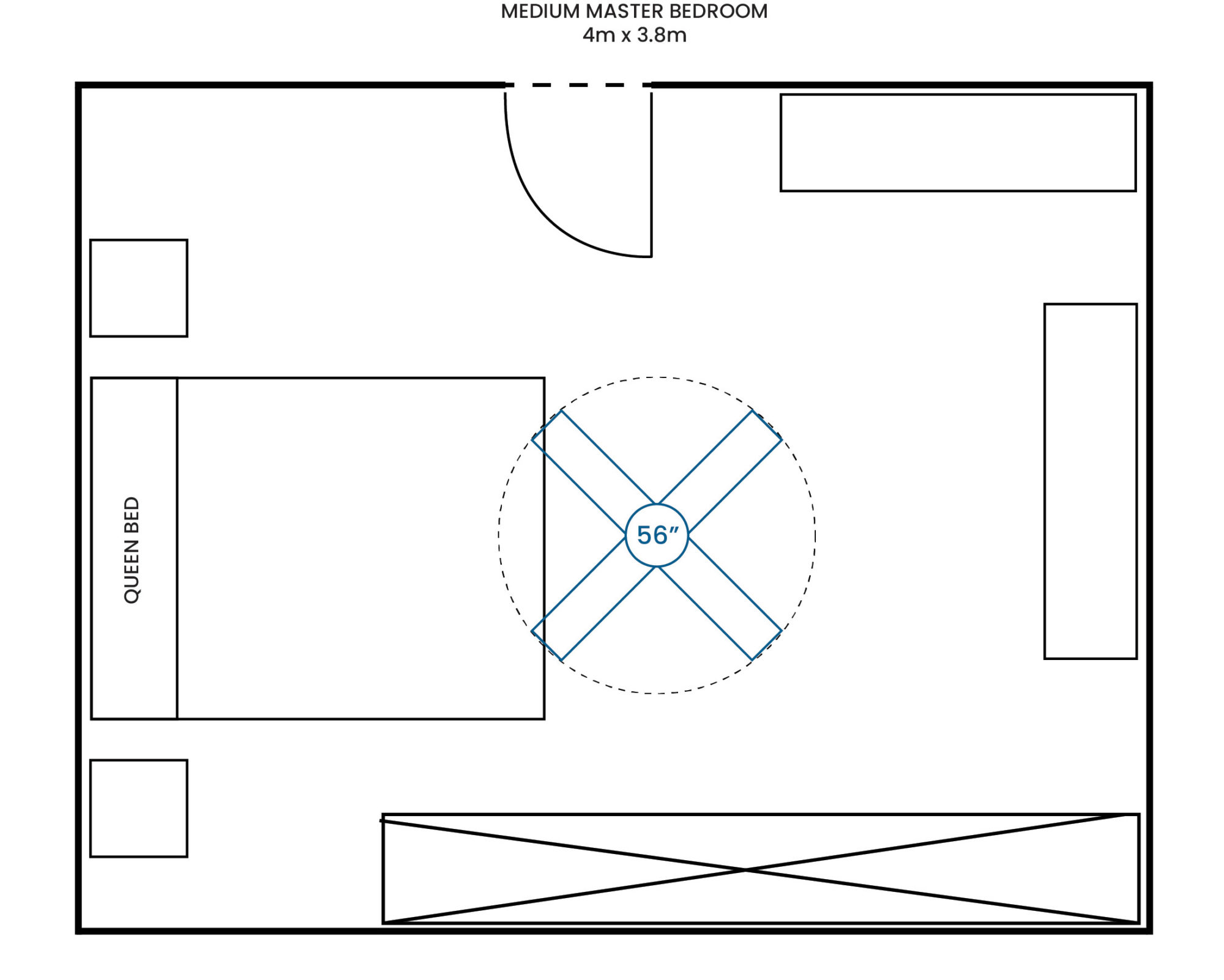
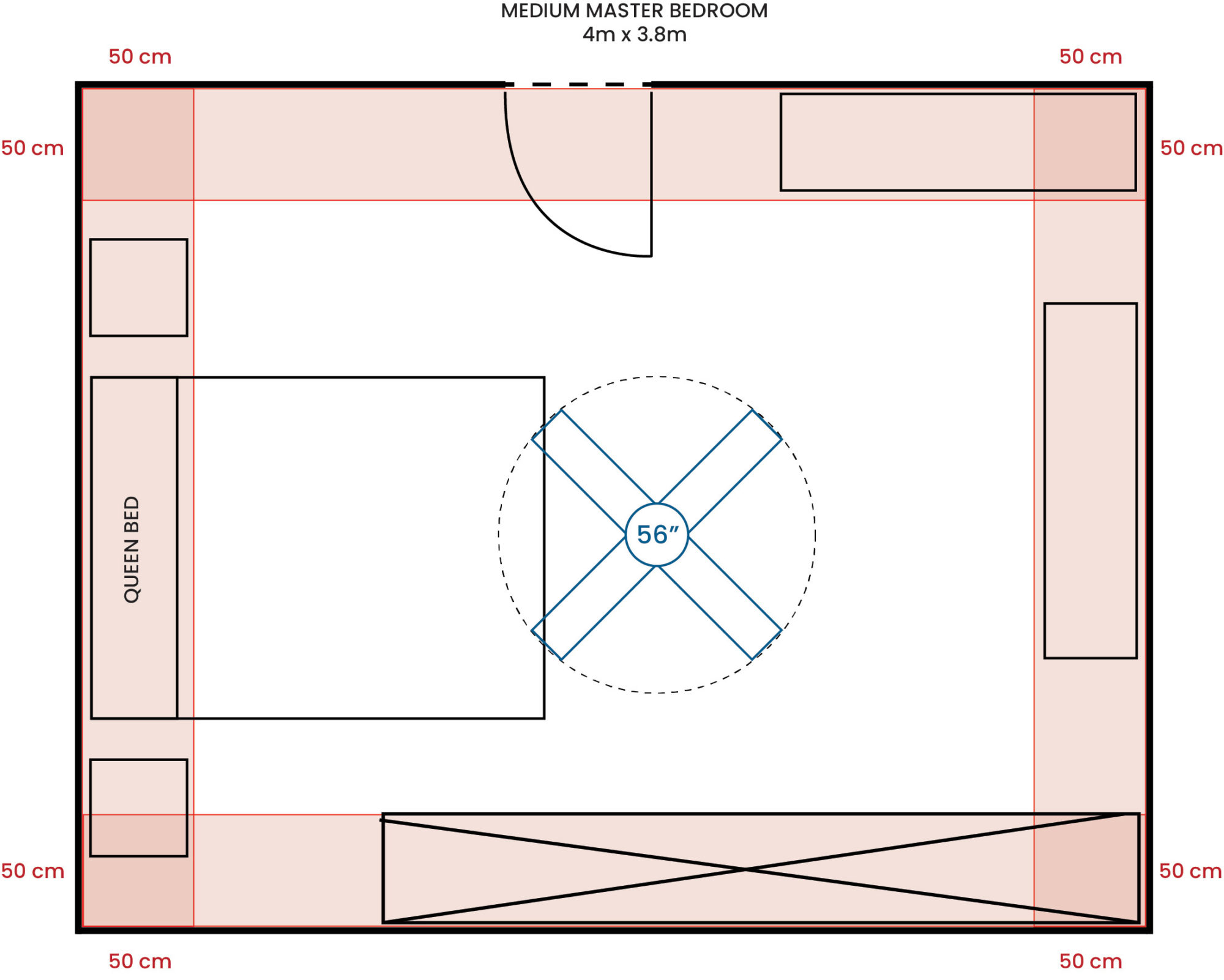
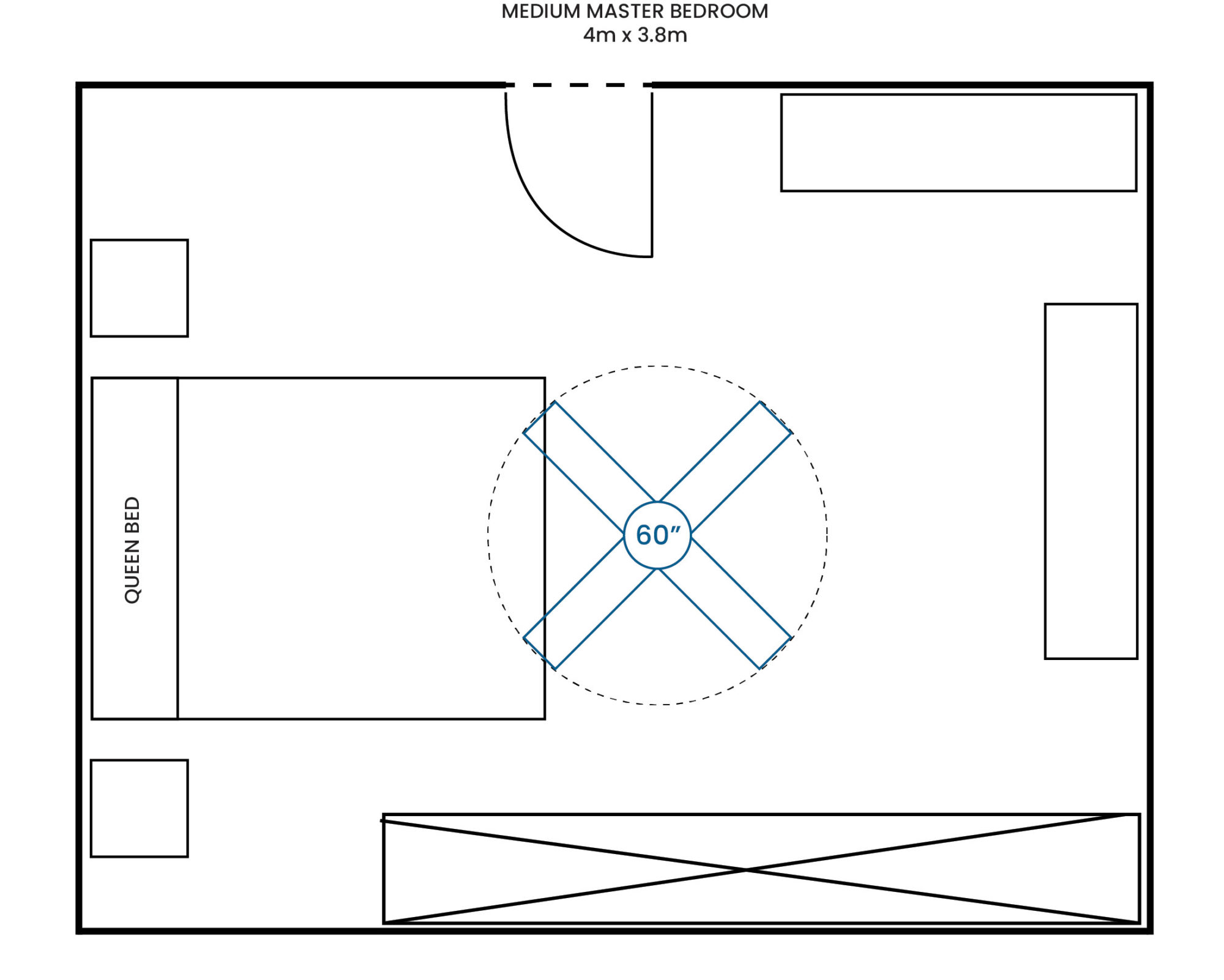
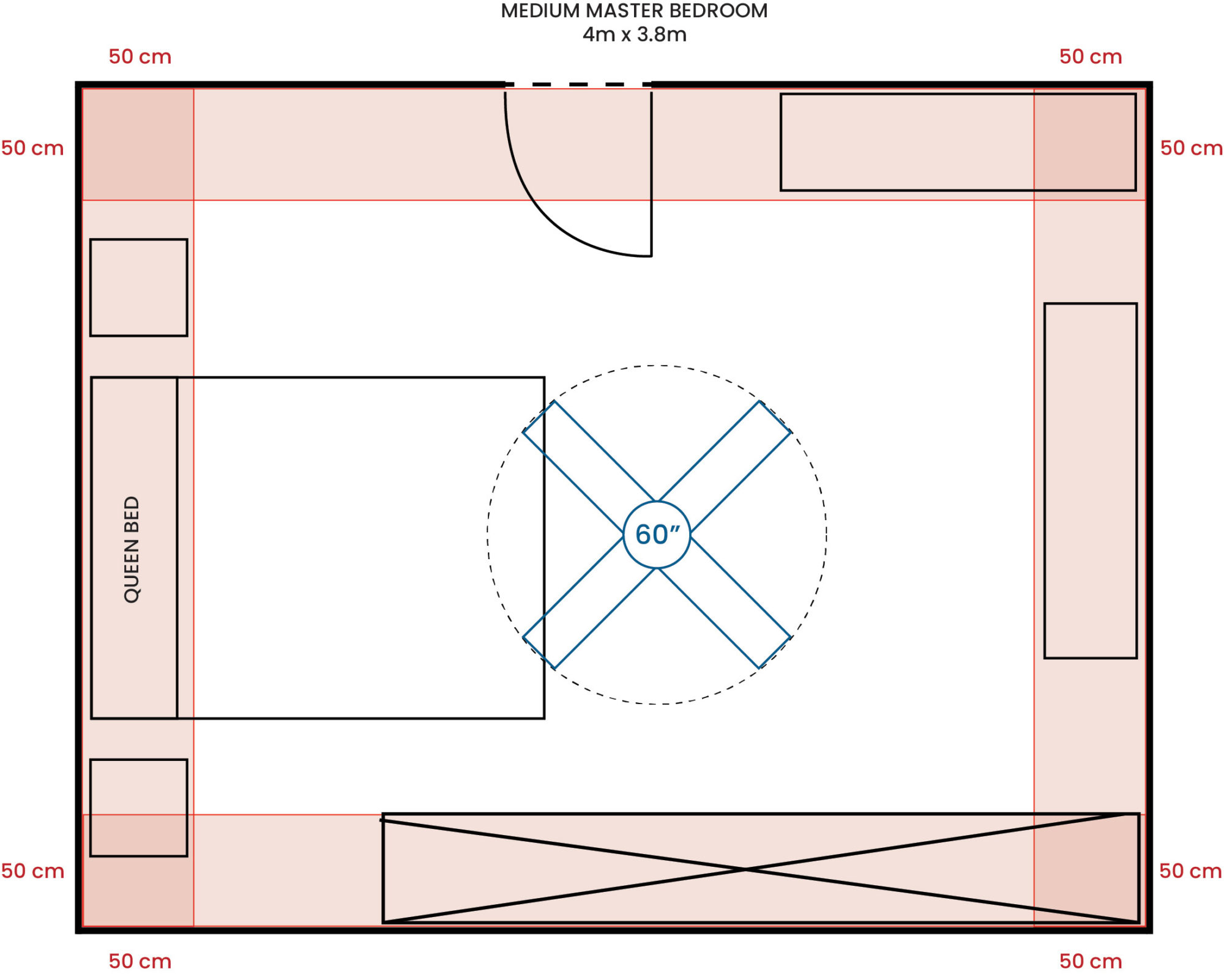
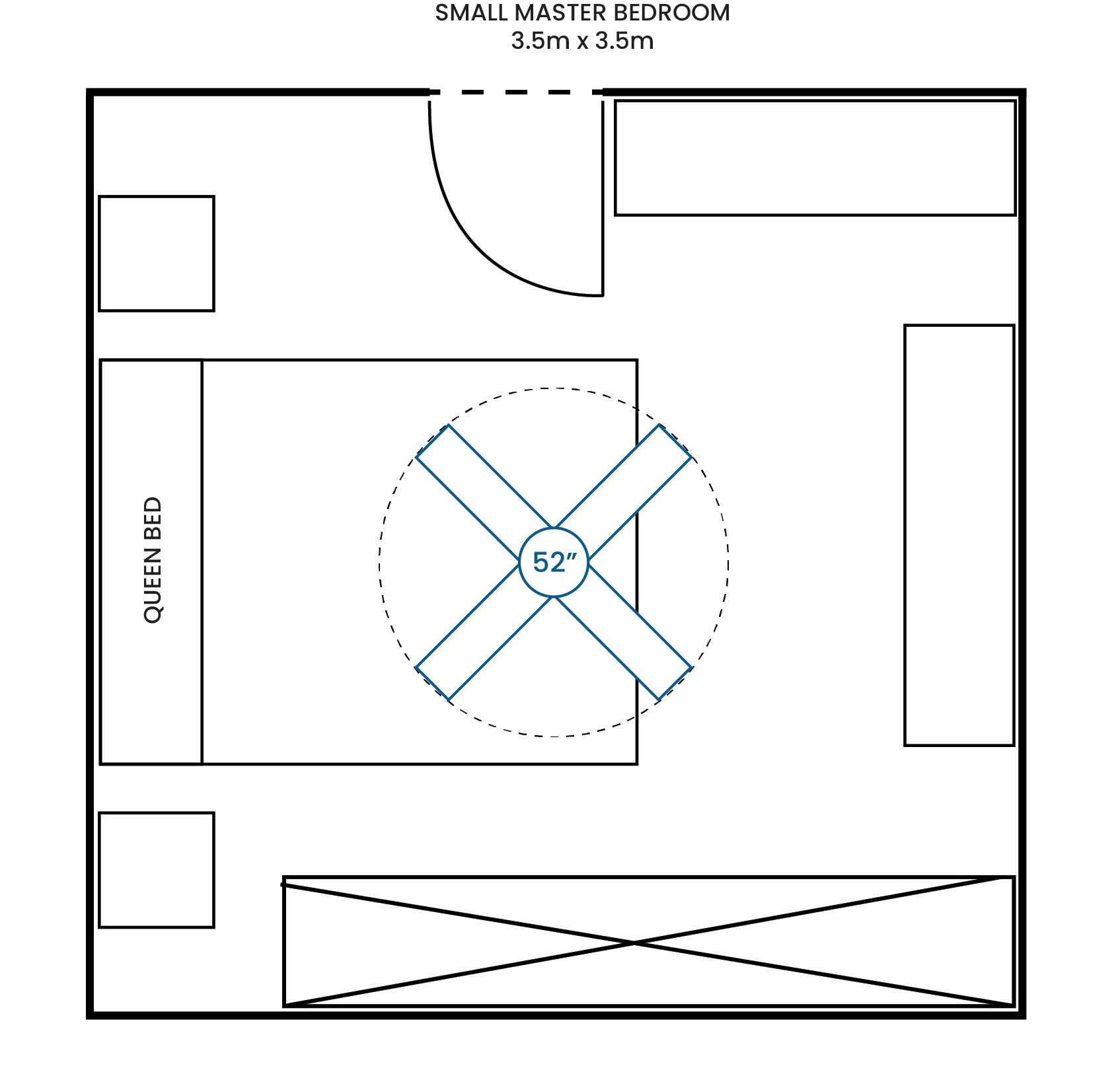

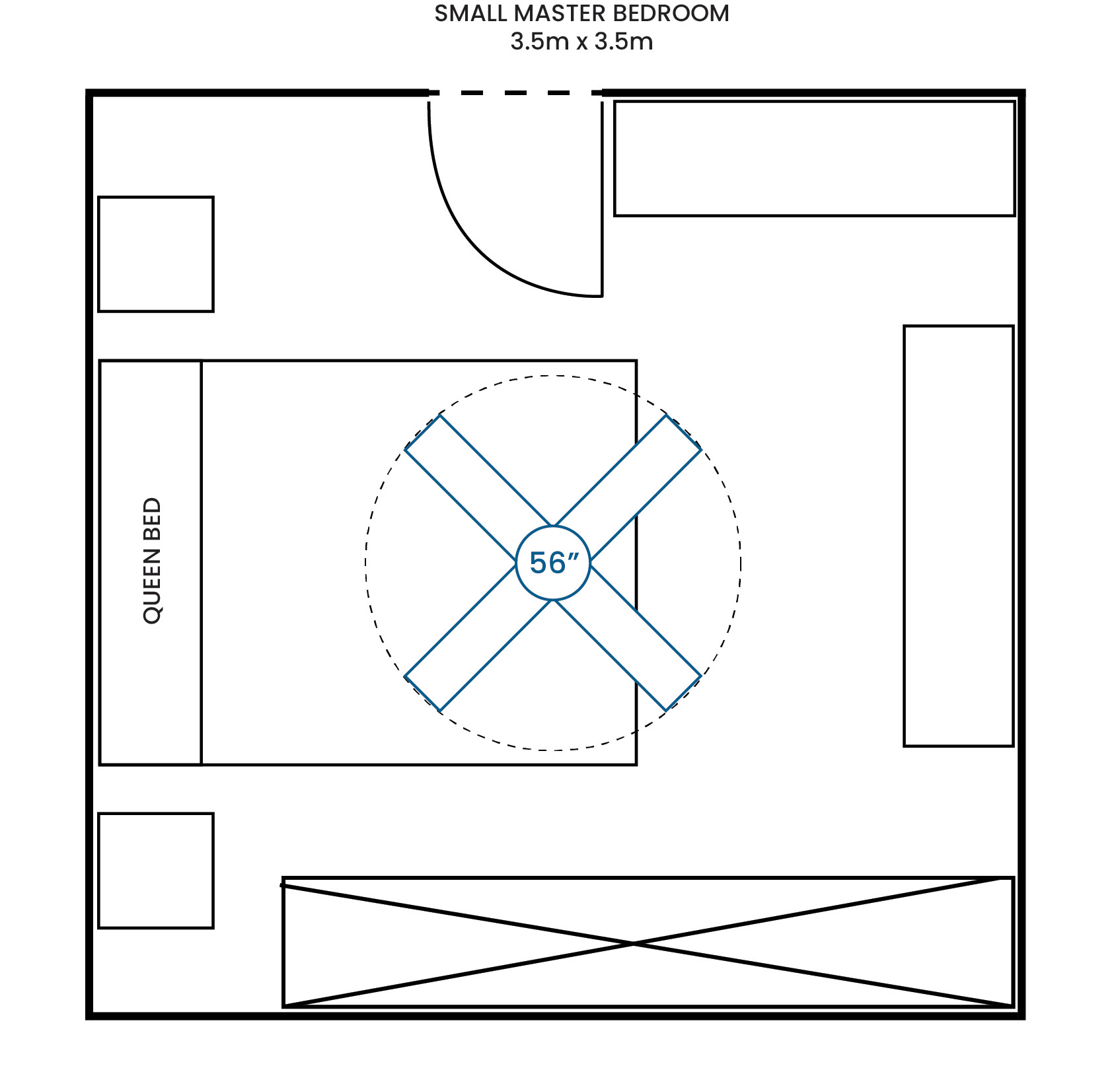
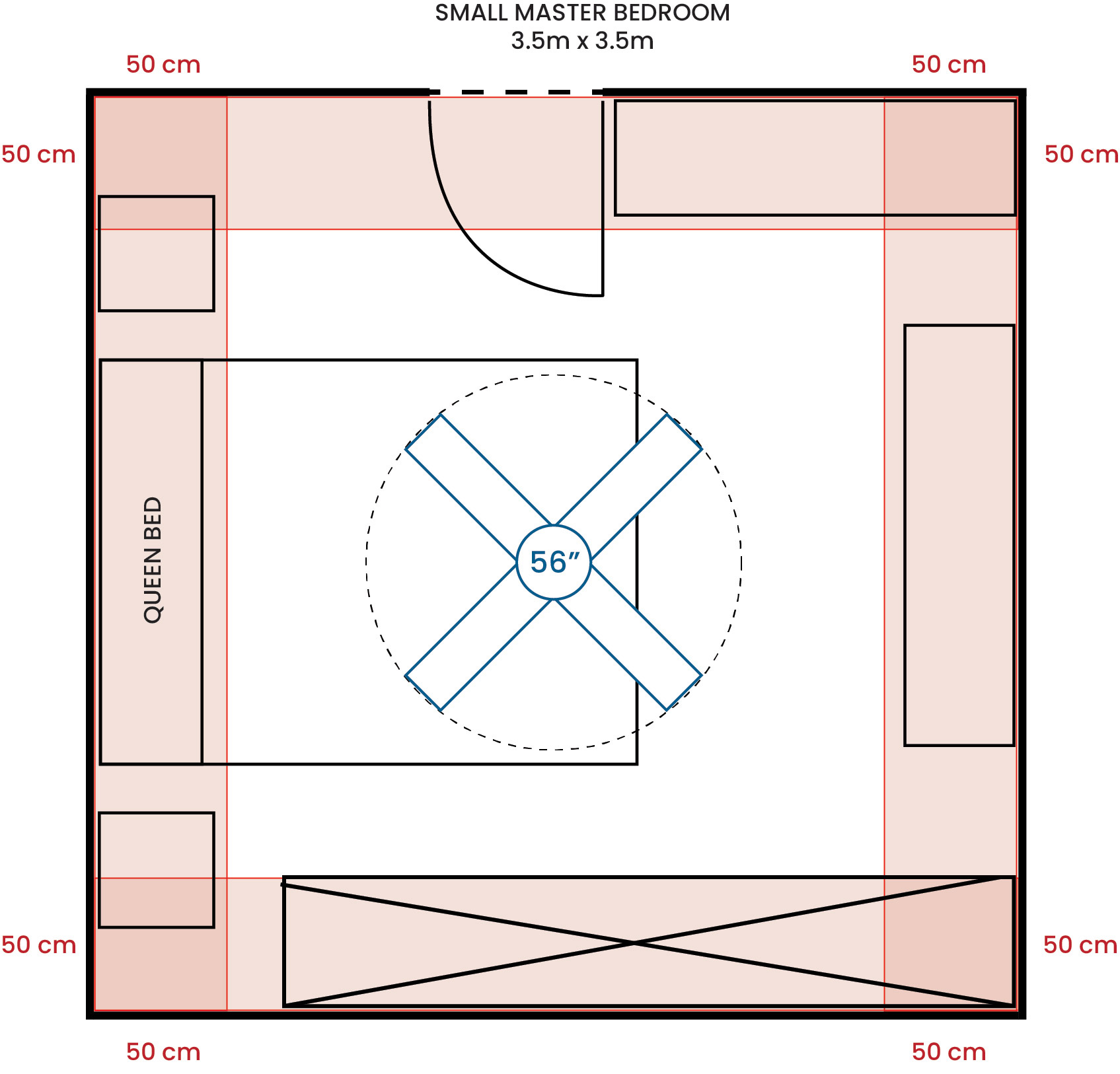
The average Living Room in an Australian home is 4.2m x 3.4m and suits models between 52″ and 56″ in diameter. Try to position your ceiling fan over key gathering points – e.g. the couch in a living room – to provide the most cooling.

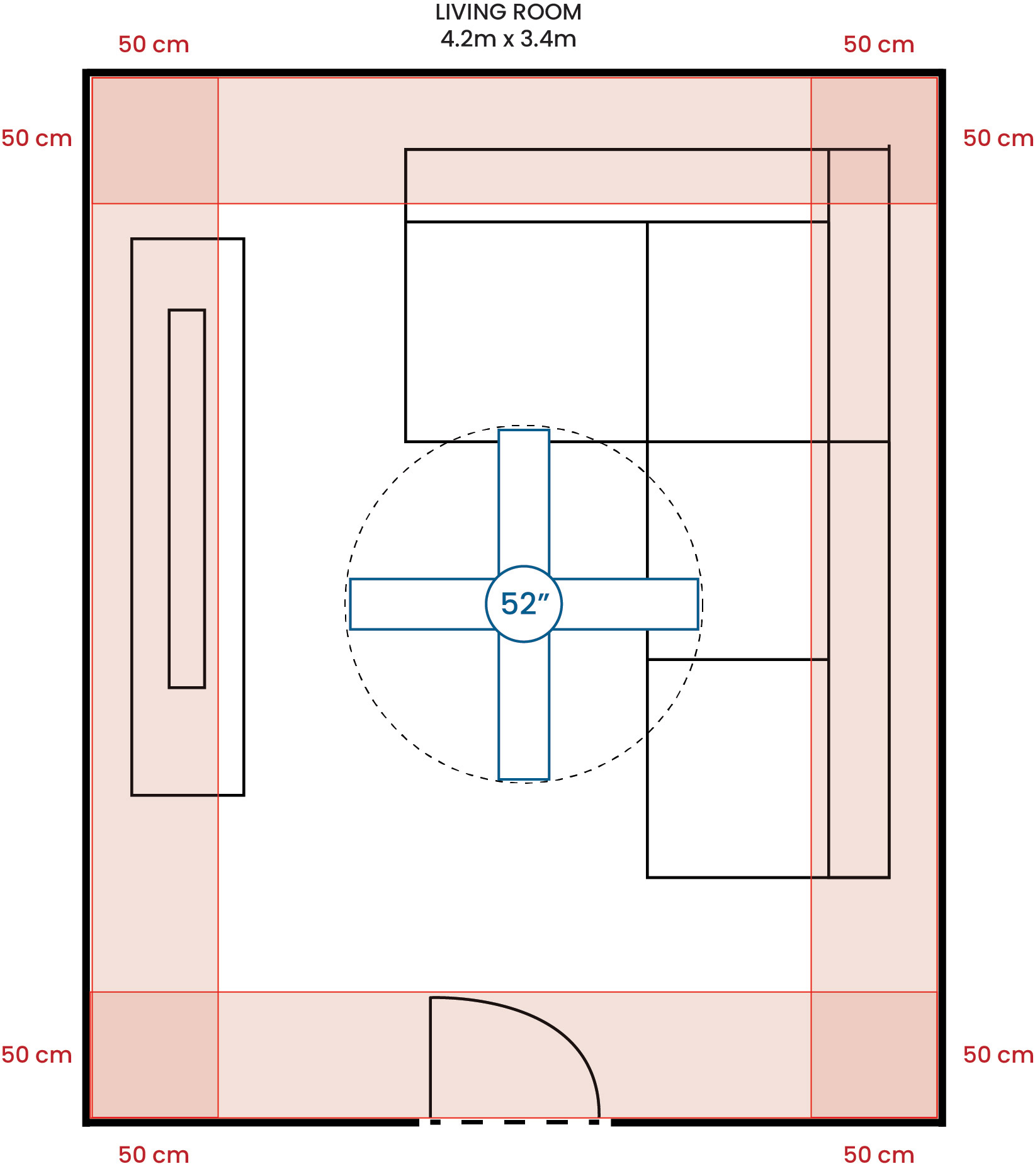
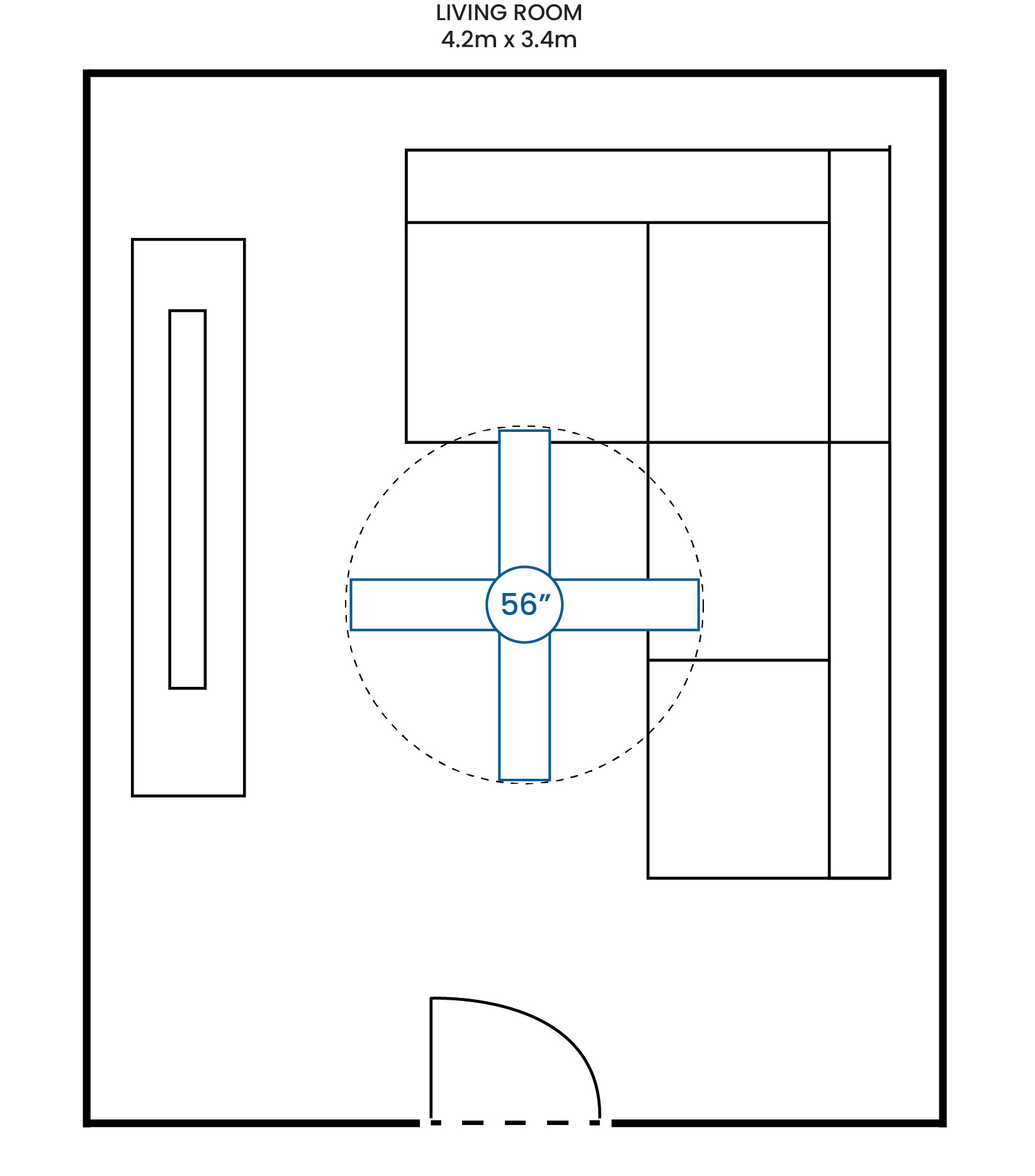

Large spaces (large master bedroom, large living areas, dining area, etc.)
For large spaces that are over 4.0m x 4.0m, consider ceiling fans that are over 56″ in size. An average master bedroom in Australia is 4.2m x 3.9m, which would suit a 56″ blade span ceiling fan. For very large spaces, it is often more effective to install multiple smaller ceiling fans located over specific gathering points (couch, dining table, etc.) as opposed to one large ceiling fan.
A very large master bedroom (e.g. 5m x 4.2m) may suit a ceiling fan up to 70″ in diameter for people that enjoy a gentle, quiet ceiling fan while they sleep.
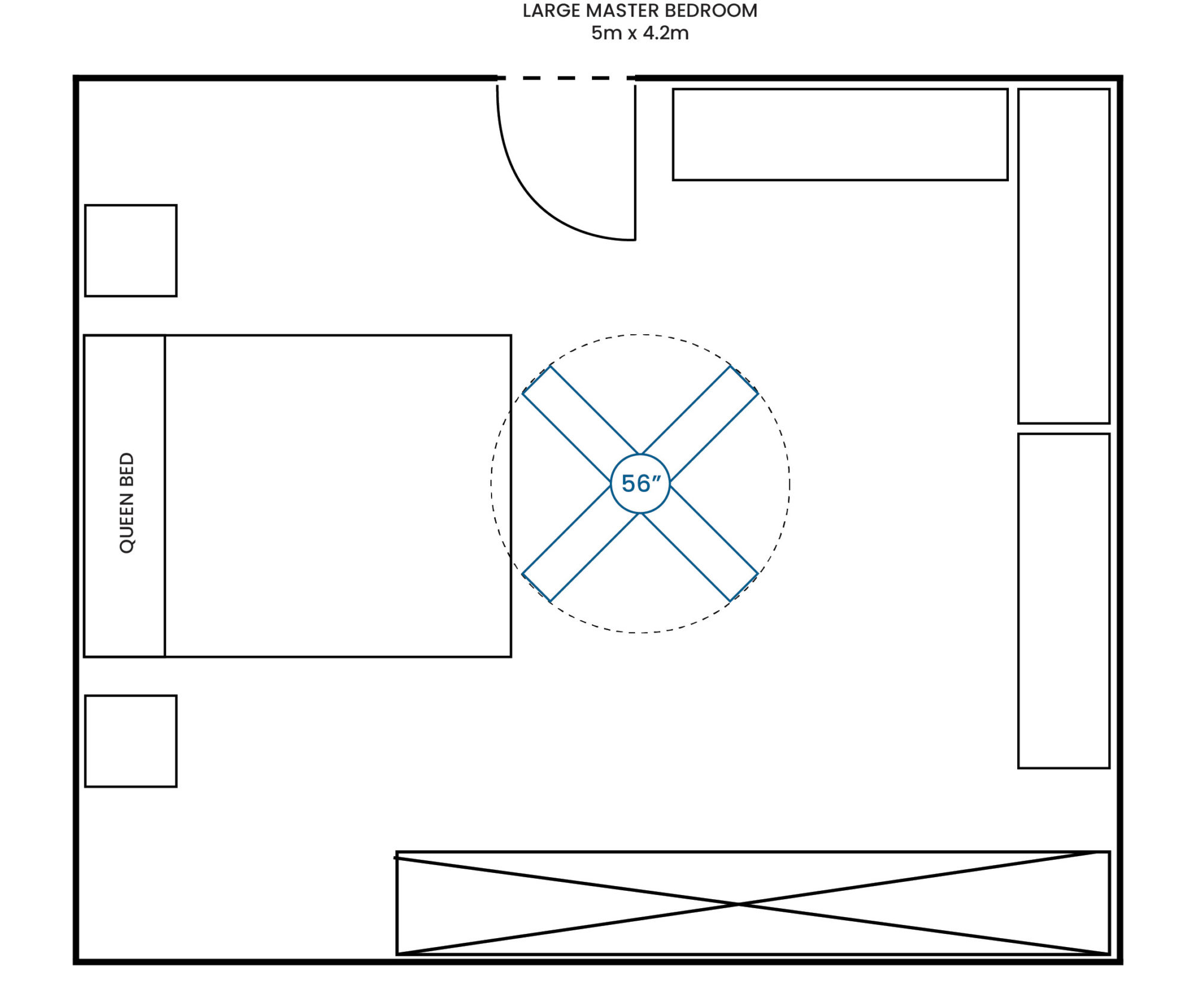

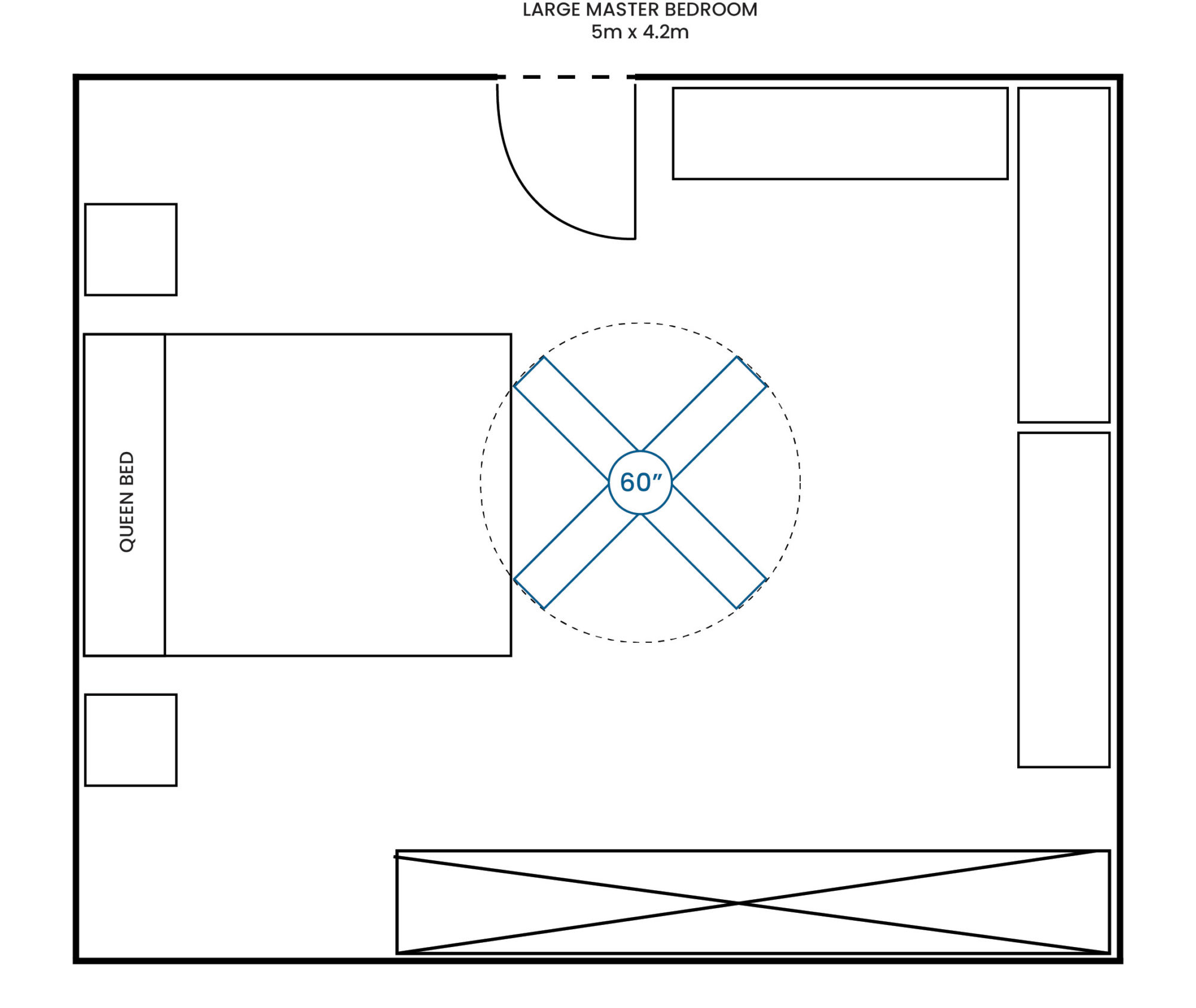
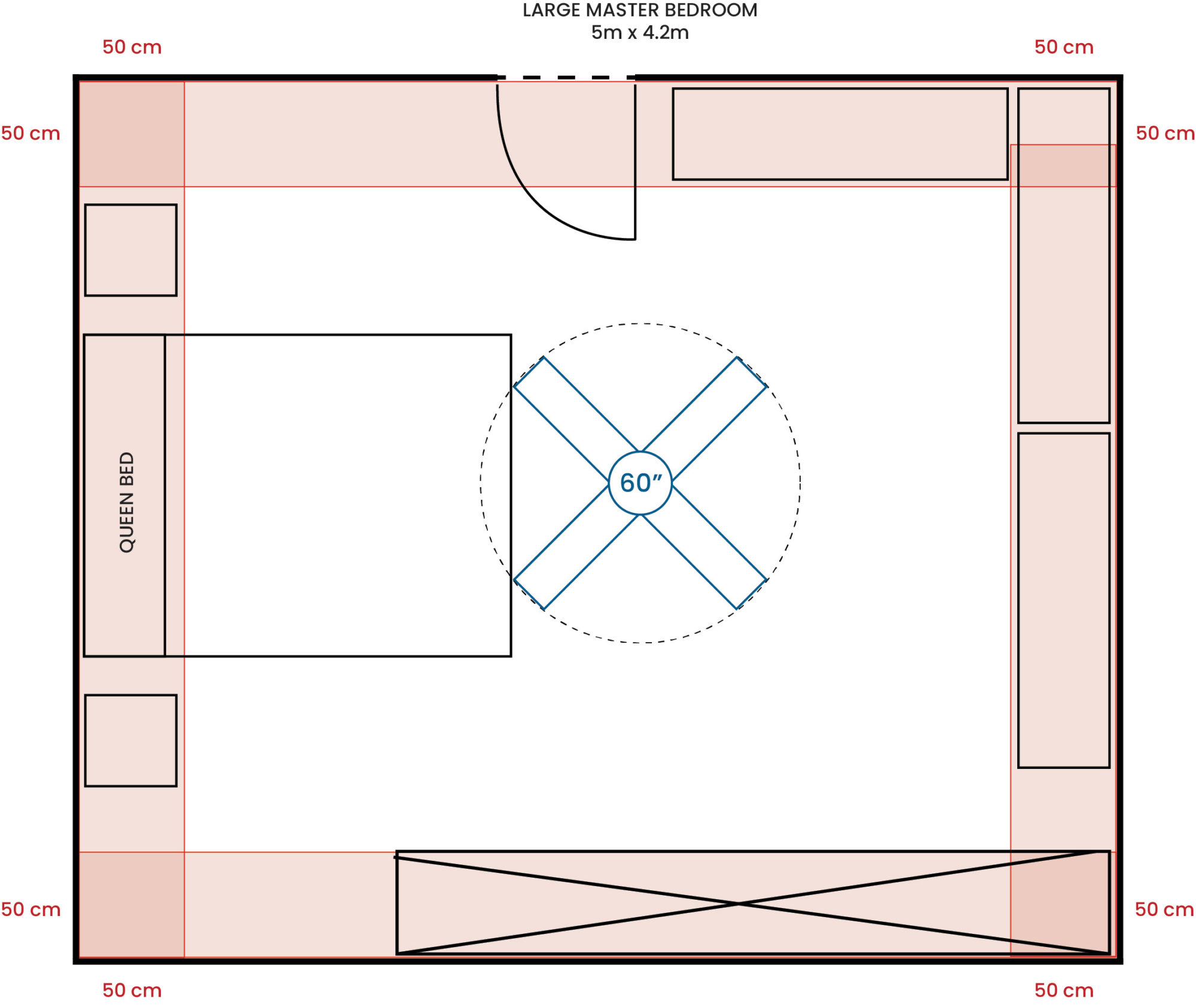
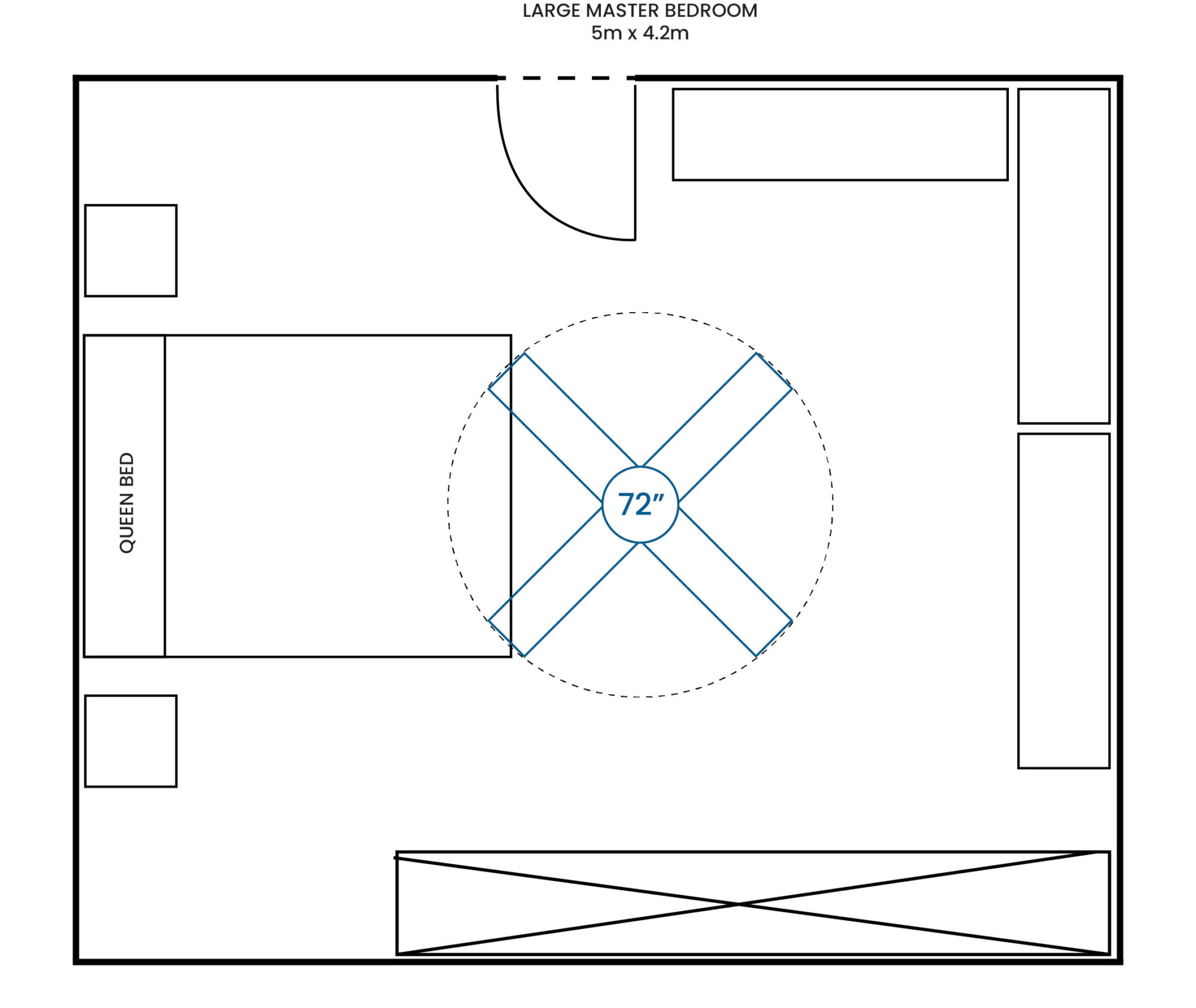
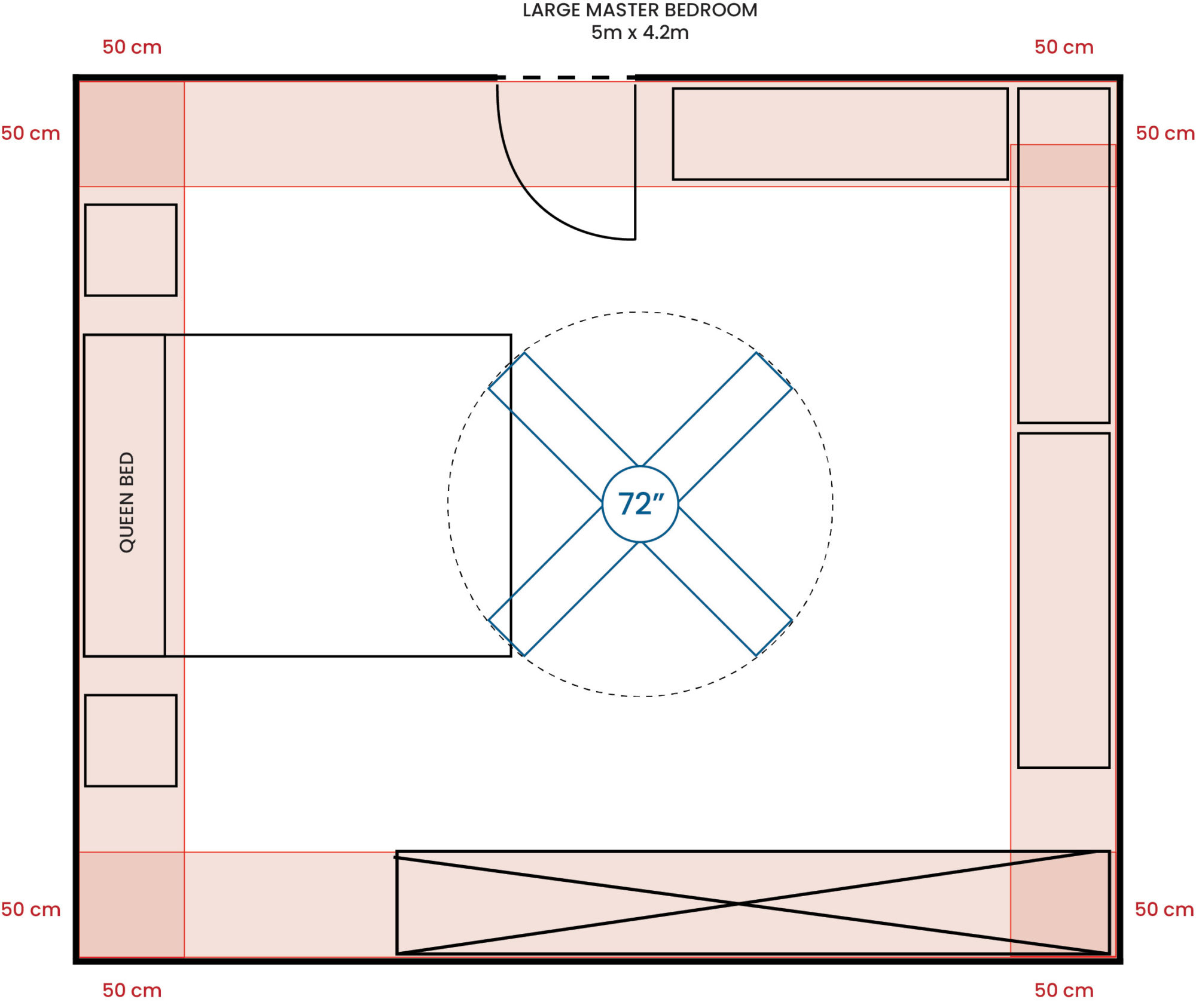
A Large Living Room that is 5.5m x 5m would suit models larger than 56″ in size, although the 56″ model would need to be well-positioned and would only provide localised cooling (e.g. over a couch). Depending on the type of cooling you are looking for, a larger ceiling fan may suit the space better but factor in the type of airflow and cooling you would prefer.



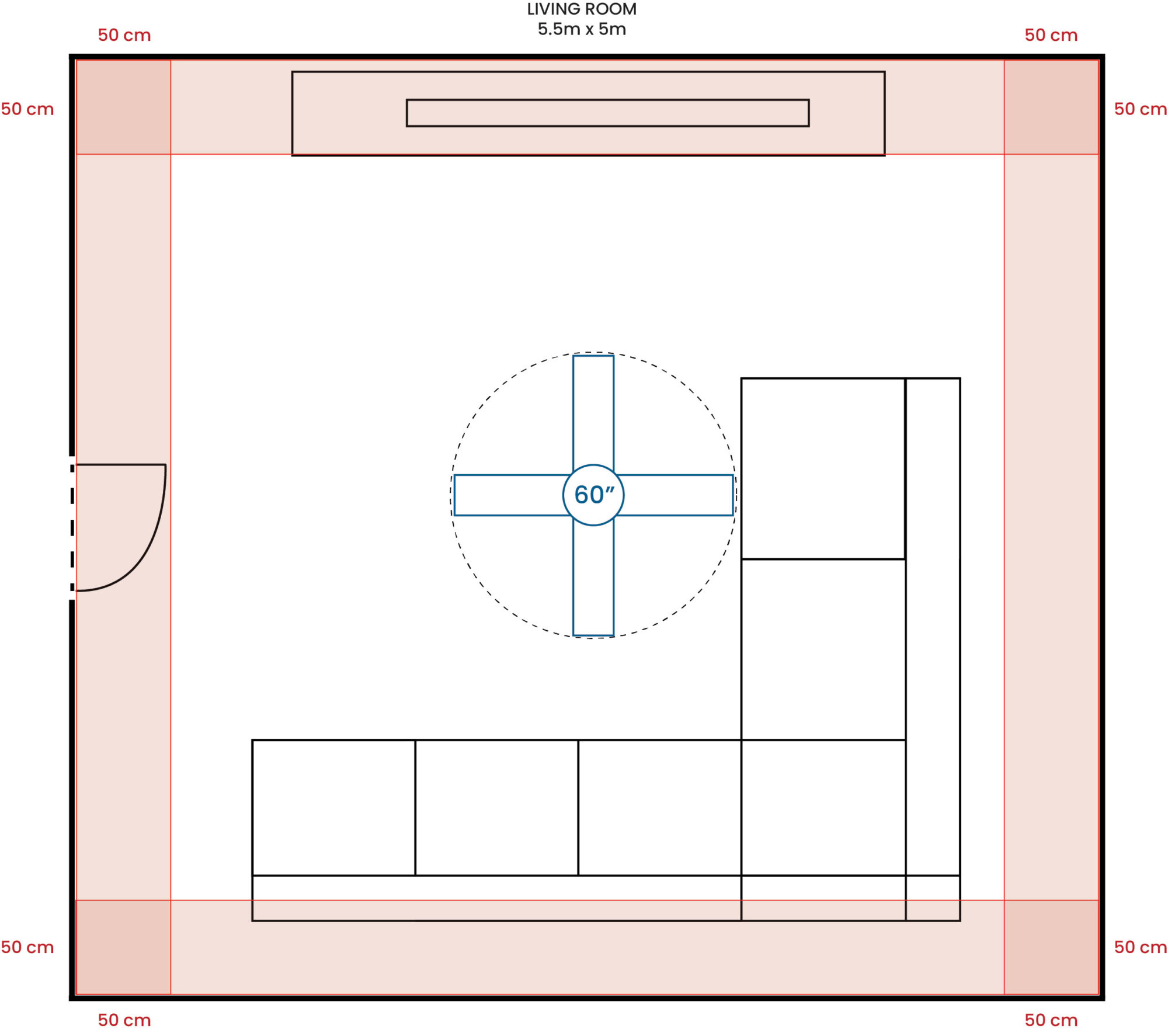
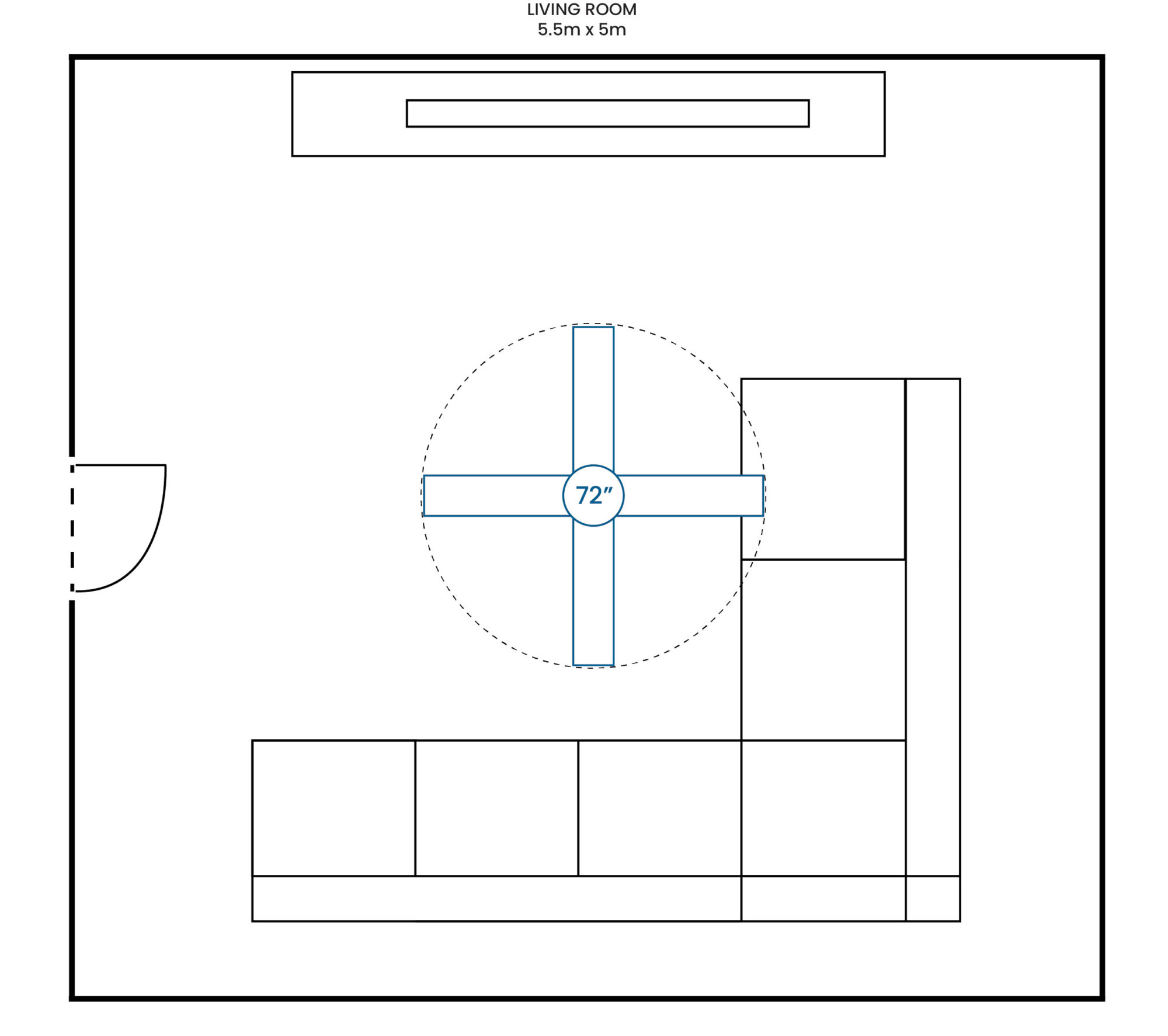

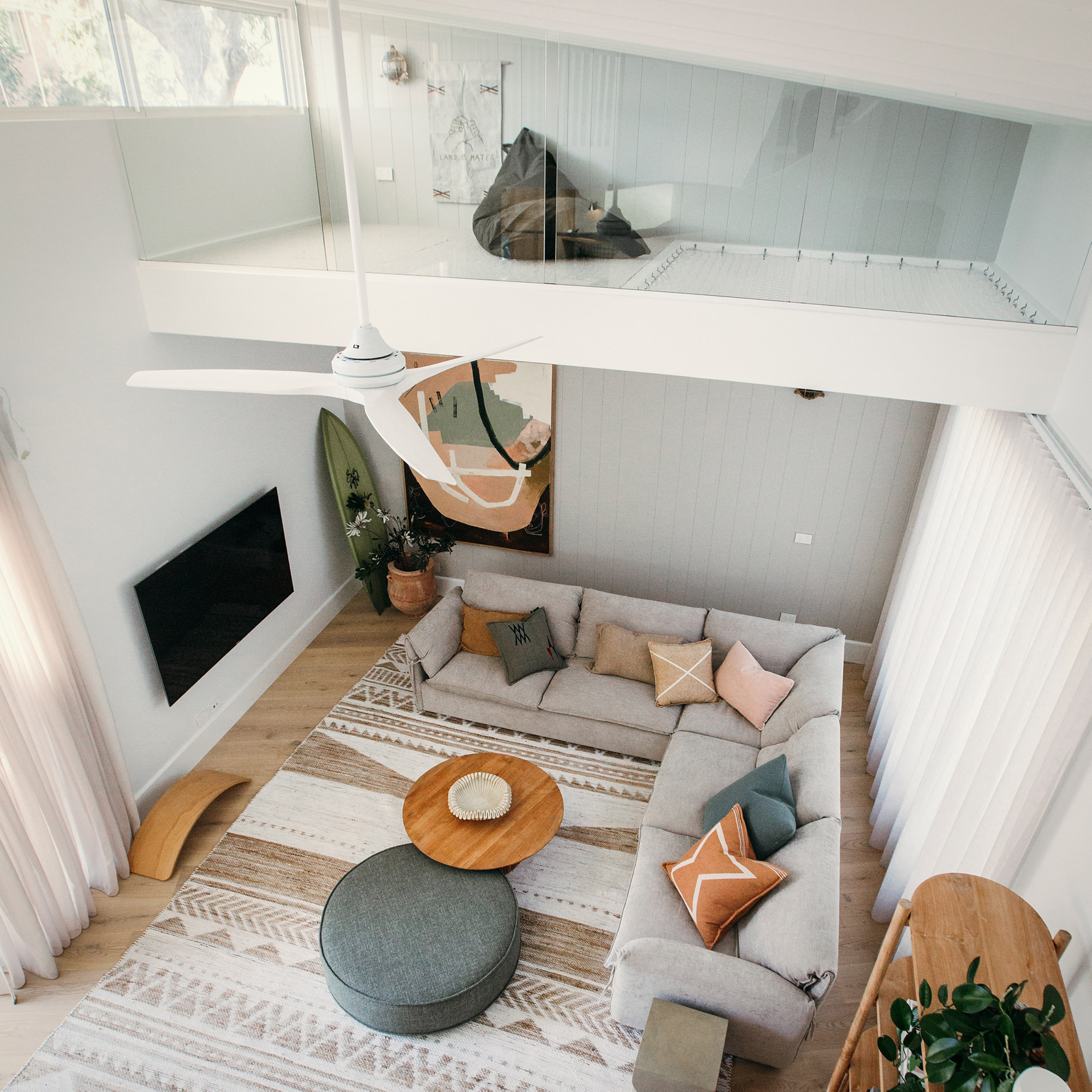
Hang your ceiling fan at an optimal height
One often overlooked variable in the performance of a ceiling fan is its distance both from where the air needs to be delivered but also the distance of the fan from the ceiling. While it makes sense that you want the breeze velocity from the fan close to where it is needed to create optimal wind chill and breeze, this air needs to come from somewhere.
Ceiling fans draw in air from above and force it down to create the breeze we feel. If there is a restriction of the available air above the blades for the fan to draw upon, this can create a vacuum effect and begin to draw the same air that is being displaced down, back up to the top of the fan. This results in a “cavitation” effect and impedes the performance of the fan. In most cases the ceiling fan provided to you in a box is not set to its optimum drop away from the ceiling, it is generally provided to you to be 30cm from the ceiling as this is the minimum height requirement on a standard 2.4m ceiling in Australia.
“Your ceiling fan blades must always be at least 2.1m from the floor to meet safety regulations.”
If you have the luxury in your space to be able to drop the fan down from the ceiling via a downrod it is advisable to do so to get the most out of your fan’s performance. For starters this gets the maximum velocity of the air forced closer to where it is needed, however, it is equally important for the fan to have as much unobstructed access to air from above to force it down efficiently.
“For high ceilings, try to position your ceiling fan between 2.4m and 2.7m from the floor.”
In terms of buying a downrod accessory for your ceiling fan, all our downrods are available in either 90cm or 180cm lengths and these can be cut to custom lengths by your installing electrician. The exact recommended downrod length for each ceiling height will vary slightly between models, as it depends on how deep the fan itself is. Refer to the ceiling fan’s Data Sheet as this will outline the distance from the ceiling to the bottom of the motor and blades for each model. This figure will be helpful in determining whether you will need a longer downrod, along with how long that downrod should be.
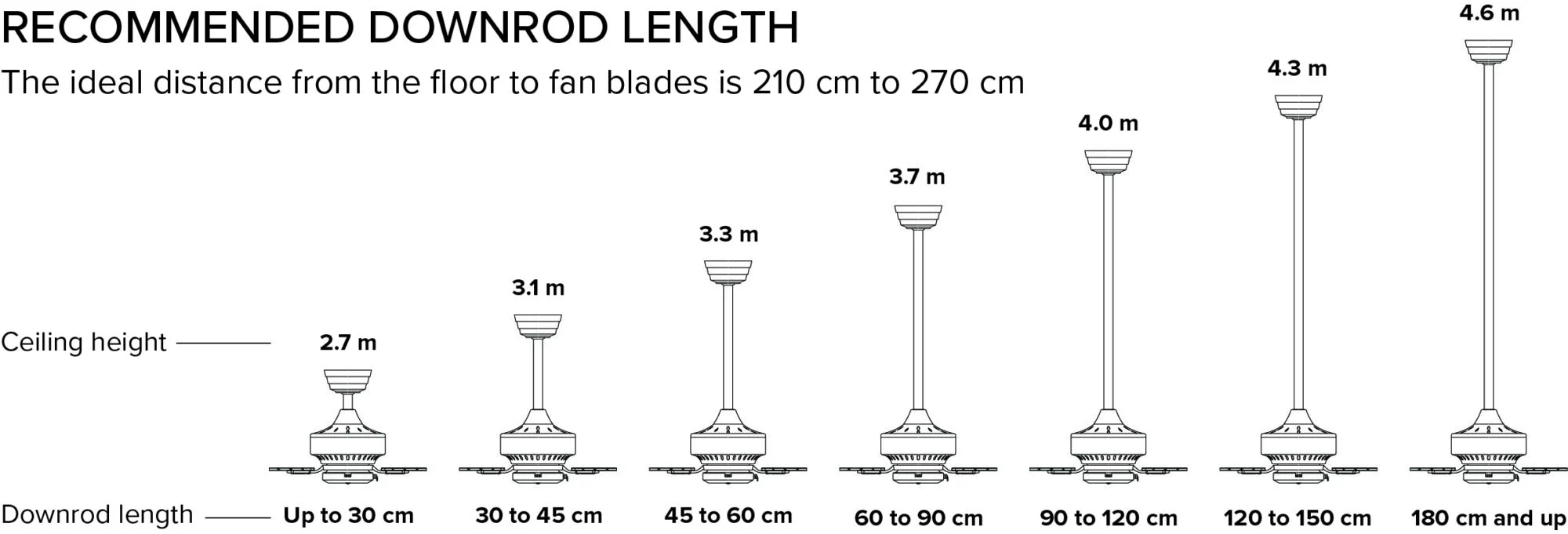
You can always get in touch with our friendly team should you have any questions or concerns about your specific installation requirements.
Consider your ceiling slope or angle
The recommended downrod lengths may change based on the slope or angle of your ceiling as high raked ceilings may require your fan to be dropped further to avoid the blades coming into contact with the ceiling.
Refer to our Sloped Ceiling Kits Guide for advice on whether you need an additional accessory.



